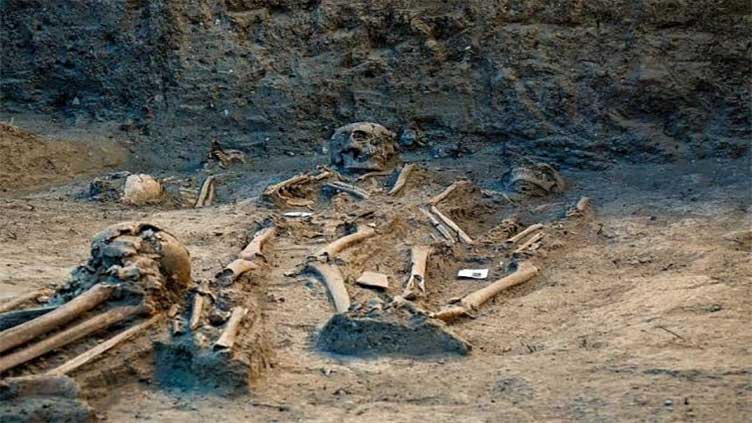Ancient bodies found in Mexico City show shared Catholic, pre-Hispanic graves

World
Ancient bodies found in Mexico City show shared Catholic, pre-Hispanic graves
MEXICO CITY (Reuters) - The remains of 28 human bodies buried at least four hundred years ago in Mexico indicate the comingling of pre-Hispanic and Catholic cultures that Spanish colonizers introduced, local researchers told Reuters.
The discovery took place during the construction of a scenic pavilion in Mexico City’s Chapultepec park in February when researchers stumbled across a cemetery from the early viceregal period of 1521 to 1620 AD.
Maria de Lourdes Lopez Camacho, the head of archaeological salvage and the National History Museum, said it is most striking that the bodies originate from distinct populations but were buried in the same period.
“Two burial systems are coexisting, the Christian burial and the burial in dorsal decubitus: the fetal position, on the side, with pre-Hispanic ceramic or obsidian, precisely from this Mexica or Tepaneca period,” Lopez Camacho said, referring to the early viceregal period.
“(The fact that) we have three levels of graves and there are a few centimetres that differentiate one level from another... tells us that there could have been one death or many deaths in a short period of time, which could tell us about an epidemic,” she said.
The archaeologist added that the burials also suggest that a nearby pre-Hispanic population could have been used as a labour force for the nearby mills, the first industries the Spanish set up.
Studies conducted by Mexico’s Directorate of Archaeological Salvage (DSA) indicate the bodies belong to two different groups and that they had suffered from infections and diseases related to nutritional deficiency. More studies are scheduled.
Mexico’s National Institute of Anthropology and History (INAH) led the study.


